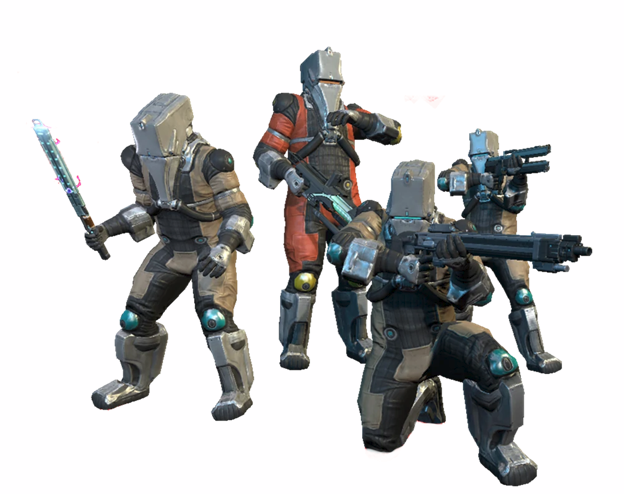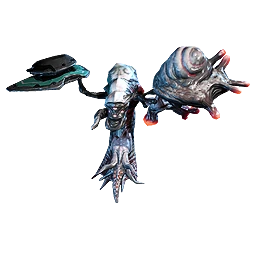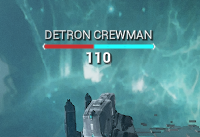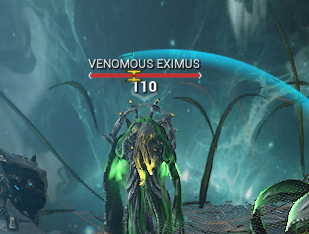Game Analysis | Warframe: Core Systems
- Alex Kong
- Dec 4, 2021
- 8 min read
Updated: Dec 4, 2021
Hey all! It's been a long while since I last posted, thanks to a slough of projects both in and out of university. Fortunately, with the fall semester ending soon, I'll hopefully be able to find time to return somewhat to my former activity here. I'll cover that a bit more at the end of my next post (yes, this is only the first!).
I spent a good part of the past summer playing Warframe, a first-person multiplayer looter-shooter, developed by Digital Extremes and released in 2013. I initially picked up the game in 2019, but only really began playing in earnest earlier this year. The game's myriad systems kept me engaged for several months - the modding system, in particular, intrigued me. By allowing players to mix and match different “cards” on their gear - which, in essence, changed the stats on that gear - the game provided an avenue for min-maxers to thrive.
There are many systems within Warframe that I wanted to explore. I wanted to begin with what I identified as the game's core systems, systems that shaped the game's basic gameplay (and without which, the game would play very, very differently - imagine Pokemon without the Pokemon).
Movement
Movement, alongside Combat, is one of Warframe’s central core systems. The game employs a traditional 3D, third-person movement scheme, with some flavorful tweaks that make Warframe’s movement unique.
Default movement uses the WASD and space keys to move and jump in a 3D space. The shift key can be held to sprint, allowing the player to move faster, or pressed to roll. The ctrl key can be held to crouch, and moving with WASD with ctrl held down allows the player to crouch-walk.
Warframe’s movement system is very fluid, employing button combos to chain movement actions together. One example is the bullet-jump mechanic - pressing [ctrl] + [space] + [directional key] (optional) will launch the player in their intended direction. This can be combined with sprinting to allow the player to cover long distances in short periods of time.
Right-clicking will allow the player to aim down sights - doing so while in mid-air will allow the player to aim-glide, falling slowly while aiming down sights.
Pressing [ctrl] while moving will allow the player to slide.

Movement Showcase
Combat
Combat is another of Warframe’s central core systems. Players access and utilize three basic types of weapons while fighting enemies - primary, secondary, and melee weapons. These weapon types allow the player to play the game in their own fighting style.
Players will fight a variety of enemies across the solar system. Each of these enemies - organized into four main factions - take on various health types that render them resistant or vulnerable to different damage types.
Players will often seek to mod their weapons for damage types that are strong versus the enemies they expect to face. Players may also seek to mod for damage types that impart useful debuffs for their playstyle - for instance, modding a high-attack-rate weapon with Heat damage will allow the player to quickly stack a high amount of damage-over-time on enemies.

Combat - Enemies
The first main element of Combat in Warframe is the game’s enemies. The player needs targets to eliminate, and these are those targets.
Enemies are categorized amongst four main factions - the militaristic Grineer, profit-seeking Corpus, mindless Infested, and repurposed Corrupted. The planets in the solar system are each populated with one of these factions (with the occasional Infested mission).
Enemies have common identities within each faction. Each faction utilizes the same health and damage types, allowing the player to properly prepare for each mission.
Combat - Health
All damageable entities in Warframe possess health points, or HP. HP comes in two forms: health and shields. Shields are generally depleted first, then health. Shields regenerate automatically after some time, while health does not regenerate automatically. An entity is destroyed or killed when their health (not HP) reaches 0. When the player’s health reaches 0, they are initially knocked down, during which they can be revived (either by themselves or by an ally). Players can revive themselves a limited number of times before they can only be revived by allies. Shields are displayed as blue.
Health comes in a variety of health types. Different health types are vulnerable to different damage types, and resistant to others. Damage weaknesses and resistances generally only affect the amount of damage that entities will take from different damage types - it does not negate them completely. Health is displayed as red.
Armor is a stat separate from health that provides an entity with additional resistance to certain types of damage. Armor can be stripped with certain types of attacks or abilities. Armored entities’ health bars will be displayed as yellow.
Combat - Damage (Damage Types)
As mentioned in the Health section, damage in Warframe takes on various types. There are two basic categories of damage types - physical, which includes impact, puncture, and slash damage, and elemental, which includes heat, toxin, cold, and electricity. Different damage types will apply different status effects (debuffs) to affected entities, unique to each damage type.
Physical damage makes up a weapon’s base damage. These cannot be added to a weapon that does not already possess those damage types.
Elemental damage makes up additional damage that a weapon applies. These can be added to a weapon through mods. The four primary elemental damage types - heat, cold, electricity, toxin - can be combined via mods to create secondary damage types - blast, corrosive, gas, magnetic, radiation, and viral.
Status effects can be triggered at random by a weapon hit, the probability affected by the weapon’s Status Chance stat. These status effects are based on the weapon’s available damage types.

Combat - Melee Weapons
Melee weapons take on the form of swords, axes, staves, daggers, scythes, and other various close-combat weapons. Unlike primary and secondary weapons, melee weapons do not make use of an ammo system. Melee weapons can freely do damage, provided that the player is within range of enemies for the weapon to connect.
Melee weapons employ a combo count mechanic. As the player lands hits with the weapon, the weapon’s combo count will increase, allowing the player to unleash deadly heavy attacks and consume the weapon’s combo. Combo count depletes when the weapon’s combo timer (displayed below the combo count) reaches 0.
In addition, melee combos (separate from the combo counter) combine movement and combat, allowing the player to use melee weapons through a variety of attack patterns. The player can move while slashing their dagger, or jump and attack to unleash a ground slam.
Different melee weapon stances (special mods that can be installed on melee weapons) give the player access to new sets of melee combos. Each set of melee combos acts like a new melee moveset for the player, allowing them to swap and use stances that fit their particular playstyle.

Above: Various melee weapons shown in the player’s Arsenal.
Below: A melee weapon at no combo (upper) and at max combo (lower).
General Combat Showcase
Mission System
The Mission System forms the basis of the game’s play structure. The game is divided into mission nodes across the planets within the solar system - in each mission, the player engages enemies and eliminates them while completing the mission’s objective. Missions are accessed via the Star Chart.
Initially, all mission nodes (except for E Prime on Earth) are locked. Mission nodes can be unlocked and played when an adjacent mission node is completed.
Completing all mission nodes in the Star Chart are completed, the player unlocks access to the Steel Path - a much more difficult version of the normal Star Chart. Missions are mostly the same, but contain tougher and stronger enemies.

Why These Systems?
Why Movement?
I view primary/core systems as the systems with which a game cannot be played without. Removing one or more of these systems from the game would fundamentally change the way the game is played, or prevent the game from being played at all.
Movement is key to Warframe as the player must be able to navigate the game’s level layouts in order to complete them. Without movement, the player would be stationary - turning the game into more of a tower-defense game.
Combat is key to Warframe as the game revolves around fighting. The player must first have targets to eliminate - the enemies. The player and enemies must have a way to be eliminated - health. The player and enemies must then be able to affect their targets’ health in some form - damage. The player must finally be able to apply this damage somehow - weapons.
I do go into more detail with each of these elements than is probably needed for purely core systems - however, it is important for the player to understand how these systems are shaped within the game, and that includes understanding how the different elements (especially those of Combat) interact.
Why the Mission System?
I view the game structure as a core system of the game. We may have movement and enemies, but where does the player encounter these enemies?
For Warframe, the game is structured around individual mission nodes accessed through the player’s Star Chart, a map of the solar system. Players select a node and load into the mission. Inside the mission, players will be given an objective - protecting a central objective, destroying an objective, wiping out a specified number of enemies, etc. Players complete this objective and then reach the extraction location in order to complete the mission.
It is within these missions where the player will have access to the full depth of movement and combat. These three systems - Movement, Combat, and Mission Selection - all interact to give players the base Warframe experience.
Secondary Systems
To close out this post, I will briefly explore some of the game's secondary systems. A more detailed discussion of these systems is warranted, and this will be covered by my next post.
Modding
I view secondary systems as systems that work with, or expand on, primary systems to really build on a game’s identity, but where the game’s basic gameplay structure will still persist even if these systems were removed. To this definition, I settled on keeping the Modding system in the secondary category.
In Warframe, all weapons, warframes, companions, and gear like archwings and necramechs can be customized through Mods. Mods drop from enemies or are rewarded on mission/objective completion at random, and each mod is meant for a specific piece of gear. Moddable gear will have mod slots in which these mods may be installed, modifying the gear’s stats. The gear’s mod capacity determines how many mods can be installed - each mod will have a drain cost that will use up mod capacity when installed. The same mod can be installed on multiple pieces of gear at the same time. The aforementioned melee stances are mods.
Mods allow players to create a variety of builds to suit different gameplay styles, all with the same gear loadout. They give players a vast array of customization options that directly affect the gameplay experience - however, if modding was removed, the base identity of the game as a mission-based, 3D third-person PvE shooter would still remain.


Crafting
Mods are not the only system I designated as secondary. In Warframe, players gain access to new weapons and gear through crafting. With a blueprint and the required materials, players may expand their arsenal at will.
However, like modding, crafting simply adds on to the base gameplay experience - it is by no means absolutely necessary. It would be possible to have all of the weapons, warframes, companions, and vehicles unlocked and accessible for the player right from the start, and the base gameplay of Warframe would remain the same. There would simply be much less grind, and much fewer goals for players to work towards.

Inventory
Without Crafting or Mods, there is no need to have an inventory system for the player, as they would not be adding or removing anything from it. What would be needed is a simple display for the player to see what weapons and frames are available for them to use, and such a display would be the same for all players.



















Comments